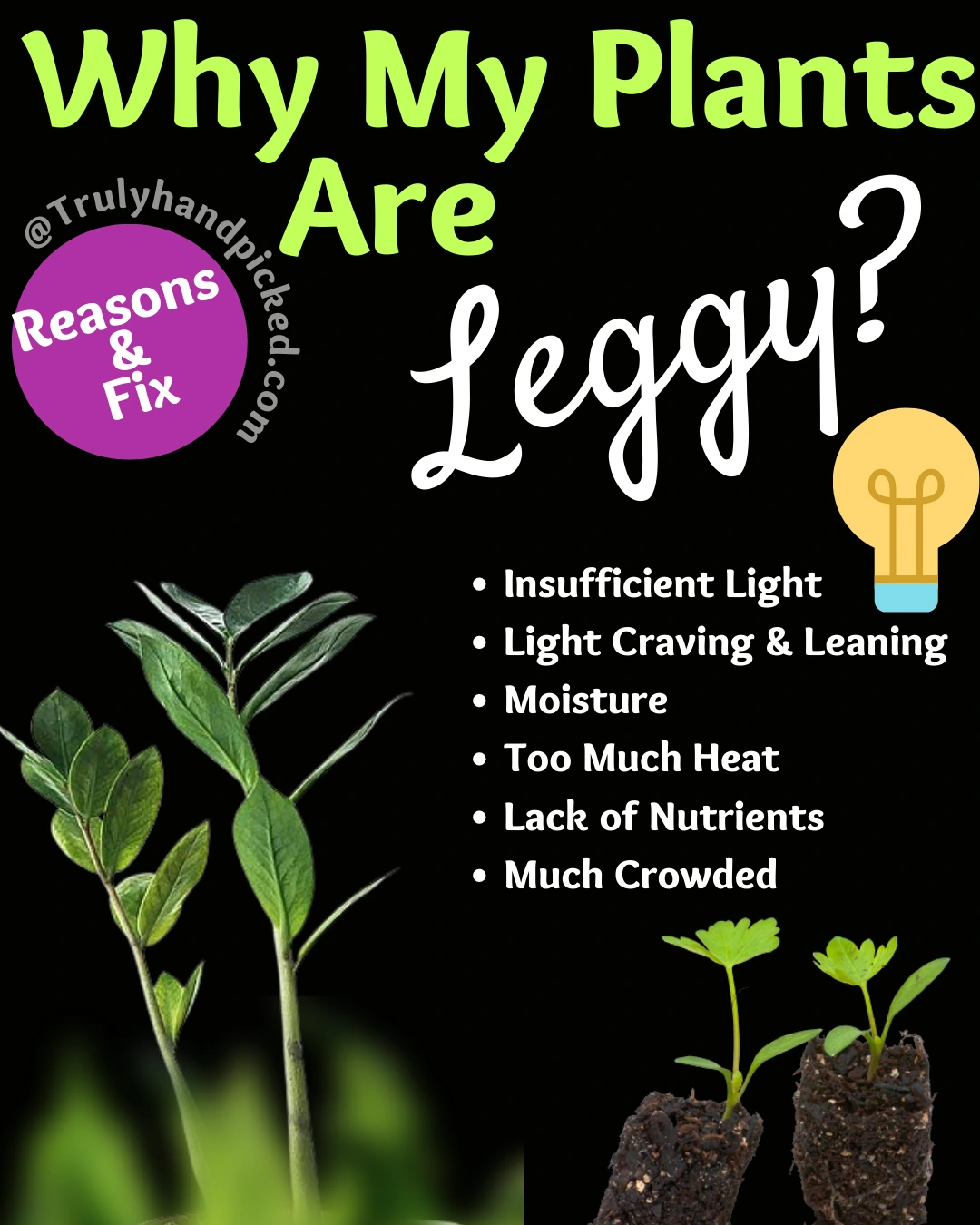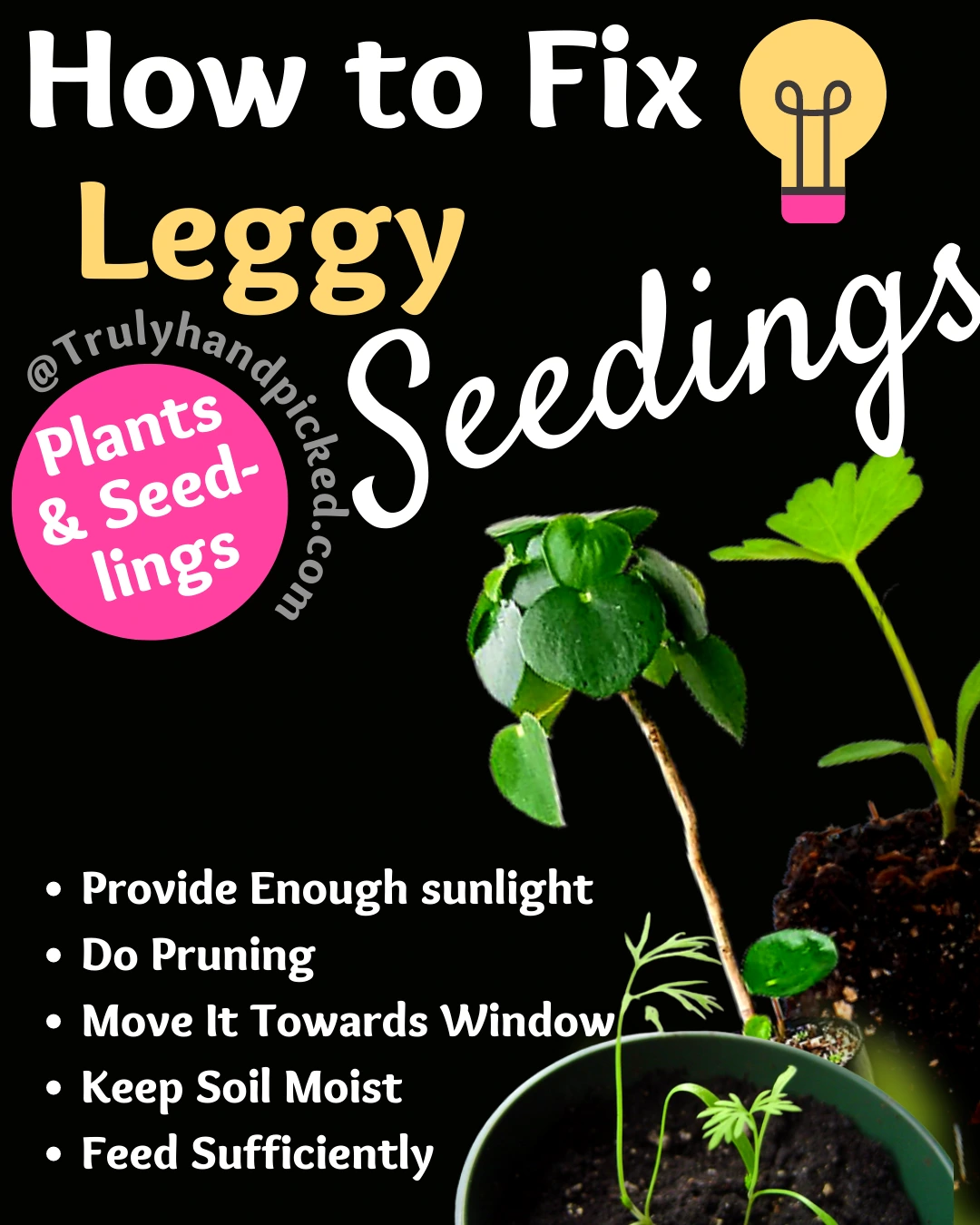Leggedness in plants and seedlings is a very common issue for several indoor and outdoor plants. When a growing plant starts producing untidy spindly branches or stems, it’s called leggy.
Leggy Plants In short: Too much nitrogen or very less light makes the plant lean (light craving) and search for light making it look leggy with fewer leaves.
If your growing plants or thriving seedlings are turning leggy, you should give your plant a quick check closely. This leggy form of a plant or seedling never turns fatal but sometimes, it tends to fall over a growing plant more rapidly.
Most of the time, this leggedness appears for some common reasons. To control and get rid of it permanently, you must follow the best effective remedy methods responsively, which are applicable to the comparability of your plant.
So, let’s learn how to win this challenge of keeping our plants and seedling free from becoming leggy through the best effective ways-

Reasons For Leggy Plants:
Causes:
The most typical reasons for plants becoming leggy are as follows-
Improper light:
Improper sunlight means-
- Lack of sunlight depending on the needs of your selected plant
- Or indirect light or light with full to partial shade that can’t meet the needs of your plant
- In simple light cravings – not enough light is available for the plant as per its need.
Growing Condition:
This problem occurs-
- When you provide your plant with a highly healthy circumstance to thrive and they add too much greenery to their stems
- Or you can’t provide your plant with a proper growing condition with a preferable climate
Lifespan:
It means-
- When you pick plant species that die back in winter and emerge again in spring
- This kind of plant experiences an uncontrollable rapid growth spout once established properly
Unsuitable Fertilization:
This can cause a leggy stem, when-
- You feed your plant unnecessarily with high-fertile fertilizer
- When you feed your plant with a high-nitrogen fertilizer, especially during springtime
Irregular Pruning Session:
This problem happens when-
- You don’t shed your plant once a year to provide the new shoots enough space to thrive
- And if you don’t trim off the tall or leggy unwanted parts in time once they start forming
All of these reasons or any of these reasons are enough to turn your well-shaped plant into a leggy one within a couple of weeks.

How to Fix Your Leggy Plants
To fix this problem and prevent it from occurring again, try these hacks suitably-
Start Pruning:
- Once you find that any part of your plant seems leggy and congested, start your pruning session immediately
- Don’t forget to trim down the newly emerged unwanted shoots too in this session of shedding the old and discolored section out of your plant
Pinch Back The Tip:
- Pinch the tip back to instigate the growth of your plant stems naturally
- Try to maintain this pruning and tip-pinching back session during the early seasons
Provide Proper Light:
- Start providing your suffering plant with more direct light with full sun exposure
- Make sure your plant can soak in bright light for six to eight hours a day
Feed Sufficiently:
- Feed your growing plants with a balanced fertilizer with a proper ratio like 8-8-8 NPK
- You can raise the phosphorous amount a bit. But avoid making nitrogen content higher in any circumstance to prevent leggy stems in your plant from eternally
Maintain Proper Climate:
- Keep the growing climate hot and moderately humid all the time
- Use the artificial device to maintain this condition with proper light to keep the possibilities of leggy stem at bay
Causes and How to Fix Leggy Seedlings:
Reasons
Inadequate Light:
This problem indicates that-
- If you place the seedlings or germinated seeds far from direct sunlight
- When your seedlings are growing under a too-shady location and couldn’t get 10-14 hours of light a day
Heavy Temperature:
It indicates-
- You put your germinated seeds at a temperature that is high above 86° F
- Or you keep the seeds outdoors under dappled light and heavy temperature before the germination starts
Lack of Moisture:
This problem occurs-
- When you don’t water the seeds after sowing
- And if you keep the seedling medium dry frequently before and after the germination
Besides, choosing the wrong season for germination can also drag the leggy consequence to your seedlings inevitably sometimes.
How To Fix:
So, here we come up with some smart tips on how to handle leggy seedlings or how to avert them from appearing on your germinated seeds again-
Adequate Light:
- Keep your seeds in the dark or shady spot for one to two days until the young sprout germinates
- Provide your seedlings a grow light or supplemental light during the germination, if they can get enough light
- Once the germination happens, place your seedlings in a spot, where they can grab 10-14 hours of bright light daily
Proper Seed Raising Mix:
- To keep the seedling mix properly moisturized, you must pick a proper growing medium
- You can buy normal commercial seed-raising mix or make it all by yourself
- Make sure the mix is nutrient-dense, well-drained, and high in vigorous microgreens
Water Properly:
- Be certain that the seed-raising mix keeps evenly moisturized throughout the time of germination
- You should water this much that the seed-raising mix stays evenly moist all the time but never turn too soggy
- Water your seedlings always from below, never from the top, and add one-inch water into the lower tray each time watering
Adjust Condition:
- Seeds need different types of climates for different conditions, try to provide them accordingly
- Keep the seeds in a hot condition between 70° to 80° F till they start germinating
- Once they form into tiny plants, provide them with filtered light with an average humidity
Do Transplantation:
- Transplantation is necessary when all your growing seedlings grow with leggy forms
- Try to sun-harden them for a couple of days before transplanting them into separate planters
- Don’t forget to bury the utmost part about 2/3 part into the soil when sowing leggy seedlings.
If you find that the seedlings turn leggy uncontrollably, try to trim them a little with a sharp pruner before the replantation. Try to follow these steps from the beginning and let your seedlings grow with only needed shoots and without any leggy parts at all.
FAQ: Can Leggy Plants Revive?
Leggy plants can revive easily with a smart pruning session and some proper prevention methods. You just need to control them in time before they start forming over bushy with the extra leggy stem.
Is Leggy Seedlings Bad?
The leggy form is not terminal for seedlings, but they make seedling more fragile and vulnerable to death. Especially, during the replantation or preliminary growing stages, as the leggy part of your plant is more tender than the normal shoots.
What Does Happen When Plant Turn Leggy?
When your growing plants turn leggy, they become less productive. Plant shoots need space to produce flowers or crops. If your plant forms a bushier with unwanted leggy stems, it can’t have enough space and decrease the production capacity noticeably.